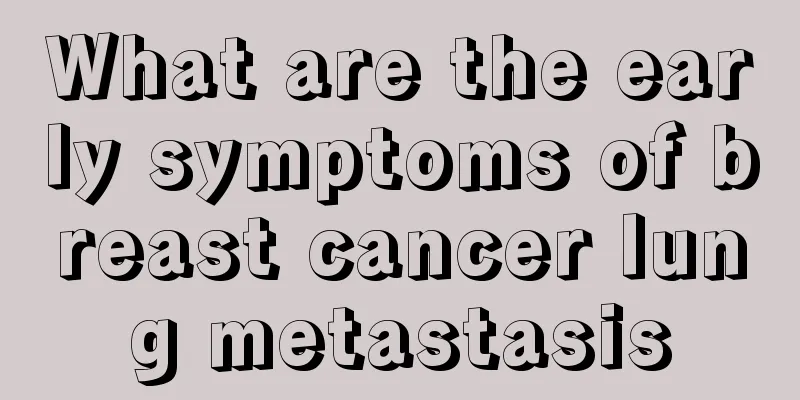Why is bile duct cancer called the king of cancer? The three most feared signs of bile duct cancer in the late stage

|
Cholangiocarcinoma, also known as bile duct cancer, is a cancer caused by the canceration of bile duct epithelial cells (or cells showing epithelial cell differentiation characteristics). Other diseases belonging to the bile duct system cancer include gallbladder cancer and duodenal papillary cancer. Cholangiocarcinoma is a rare adenocarcinoma, with an annual incidence of less than 6 cases per 100,000 people in most countries; however, the incidence of cholangiocarcinoma in some parts of East Asia is particularly high, and the incidence in Thailand, South Korea, and Shanghai is even higher than the standard for rare cancers. The most common physical changes of cholangiocarcinoma are abnormal liver function, jaundice (bile causes yellowing of the eyes and skin after bile duct obstruction), abdominal pain (30%–50%), general itching (66%), weight loss (30%–50%), fever (less than 20%), and changes in stool and urine color. The type of symptoms depends on the location of the tumor in the bile duct: those located in the extrahepatic bile duct are more likely to have jaundice; those located in the intrahepatic bile duct are more likely to have abdominal pain, but are less often accompanied by jaundice. The liver function blood test reports of patients with cholangiocarcinoma often show various "obstructive" characteristics: that is, the concentrations of bile pigment, alkaline phosphatase, and alanine glutamate transferase are elevated, but the concentration of transaminase is normal. Such test results exclude the possibility of inflammation or infection of liver parenchymal tissue, and clearly indicate that the lesion of jaundice comes from bile duct obstruction[6]. Most patients with cholangiocarcinoma will also have elevated CA19-9 concentrations. Although modern medical technology is very advanced, we are still not very clear about the causes of some diseases. Cholangiocarcinoma is such a disease. We are not sure about the causes of bile duct cancer, but there are some factors that are related to the occurrence of bile duct cancer. 1. Chronic inflammation and infection of the bile duct: Long-term chronic inflammation is the basis for the occurrence of bile duct cancer, because clinically found that diseases related to bile duct cancer can lead to chronic inflammation of the bile duct. Certain substances in the bile (such as metabolites of bile acid) stimulate the bile duct mucosa for a long time, leading to atypical hyperplasia of the epithelium. 2. Bile duct and gallbladder stones: 20% to 57% of bile duct cancer patients have gallstones, so it is believed that chronic stimulation by stones may be a carcinogenic factor. 3. Ulcerative colitis: It has been reported that the incidence of bile duct cancer in patients with ulcerative colitis is 10 times higher than that in the general population. The age of onset of bile duct cancer patients with ulcerative colitis is 20 to 30 years earlier than that of the general population, with an average age of 40 to 45 years. They often have a long history of colitis. Chronic bacteremia in the portal vein system of patients may be the cause of bile duct cancer and PSC. The lesions often affect the entire colon. Ulcerative colitis-induced bile duct cancer may be related to chronic portal vein bacteremia. 4. Cystic malformation of the bile duct (congenital bile duct dilatation): It has become a consensus that congenital bile duct cysts are prone to cancer. The incidence of bile duct cancer in patients with congenital bile duct cysts is as high as 2.5% to 28%. Patients with bile duct cysts develop cancer 20 to 30 years earlier than normal people. Although 75% of bile duct cysts show symptoms in infancy and childhood, as for the occurrence of bile duct cancer, 3/4 of patients have symptoms of bile duct cysts in adulthood. Regarding the mechanism of bile duct cysts leading to bile duct cancer, some people believe that when the opening of the pancreatic duct into the bile duct is abnormally high, pancreatic fluid will flow back into the bile duct and cause malignant changes in the bile duct epithelium. Other factors that may lead to malignant changes include bile stasis, stone formation, and chronic inflammation in the cyst cavity. 5. Liver fluke (Clorchis sinensis) infection: Clonorchis sinensis infection is also believed to be related to the occurrence of cholangiocarcinoma. Although Clonorchis sinensis mostly parasitizes in the intrahepatic bile duct, it can also parasitize in the extrahepatic bile duct. The worm itself and its metabolic products cause long-term stimulation to the bile duct mucosal epithelium, causing hyperplasia of the bile duct mucosa, tumor-like changes, and cancer. 1. Maintain a happy mental state, develop good eating habits, avoid spicy food, eat less greasy food, and do not drink strong alcohol. 2. For people over 40 years old, especially women, regular B-ultrasound examinations should be performed. If cholecystitis, gallstones or polyps are found, follow-up examinations should be conducted and treatment should be initiated as soon as possible if any changes are found in the condition. 3. Before actively treating cancerous lesions, the factors that may cause cancer should be eliminated sooner or later. The prognosis of bile duct cancer is not ideal, and the prognosis of bile duct cancer is extremely poor. The average survival time of the bile duct cancer surgical resection group is generally 13 months, and rarely survives for 5 years. If only internal or external bile duct drainage is performed, the average survival is only 6 to 7 months, and rarely exceeds 1 year. Preoperative preparation: Since the resection of hilar cholangiocarcinoma involves a wide range of operations, liver lobectomy is often required. Patients often have severe jaundice, malnutrition, and low immune function. In addition, patients with cholangiocarcinoma are generally older, so good preoperative preparation is very important. General preparation: systematic laboratory and imaging examinations to understand the whole body condition, replenish physiological water and electrolytes, and use antibacterial drugs before and during surgery. Before surgery, it is necessary to confirm whether the cardiopulmonary function can withstand the surgery. Mild cardiopulmonary dysfunction should be corrected before surgery. Coagulation dysfunction should also be corrected as much as possible before surgery. Cholangiocarcinoma is a difficult and rapidly fatal disease that can only be cured if the tumor can be surgically removed. In most cases, the success rate of surgery cannot be assessed until the surgery is performed, unless there is clear evidence that the patient cannot undergo surgery. Therefore, patients will often undergo a trial operation first. The Mayo Clinic has achieved significant success in the treatment of early cholangiocarcinoma using standardized liver transplantation and strict surgical selection criteria; adjuvant therapy after liver transplantation has a significant role in specific cases where the tumor cannot be removed. Adjuvant chemotherapy and radiotherapy Because up to 85% of bile duct cancer patients relapse within three years after surgery, patients often use adjuvant chemotherapy or radiotherapy after surgery to increase the chance of cure. If the tumor tissue margins are negative after surgery (for example, the tumor has been completely removed), adjuvant therapy may not be beneficial. Reports indicate that adjuvant radiotherapy may have positive or negative results; for patients whose tumors have been successfully removed, adjuvant chemotherapy does not seem to make sense. The effect of combining chemotherapy and radiotherapy is currently unclear. If the tumor tissue margins are positive after surgery, it means that the tumor has not been eradicated, and adjuvant radiotherapy and chemotherapy are generally recommended. Current research results show that chemotherapy seems to be more effective than radiotherapy, and a phase III randomized controlled trial of the chemotherapy drug gemcitabine/cisplatin has been registered in 2014. In the vast majority of cases of advanced cholangiocarcinoma, surgery is not possible, and patients usually receive palliative chemotherapy, possibly in combination with radiation therapy. Results of randomized controlled trials have shown that chemotherapy can improve quality of life and prolong life in these patients. There is currently no single chemotherapy routine, and patients are often advised to apply for clinical trials if conditions permit. Chemotherapy drugs for the treatment of cholangiocarcinoma include 5-fluorouracil/leucovorin, gemcitabine alone or gemcitabine plus cisplatin, elenodikan, or capecitabine. A small feasibility study suggests that the tyrosine kinase inhibitor erlotinib may be beneficial in patients with advanced cholangiocarcinoma. Foods suitable for bile duct cancer diet (1) It is advisable to eat more foods that have anti-biliary and bile duct cancer effects: shark fin, chicken gizzard, buckwheat, coix seed, tofu dregs, and Hericium erinaceus. (2) It is advisable to eat more foods that have anti-infection and anti-cancer effects: buckwheat, mung beans, rapeseed, toon, taro, scallion, bitter melon, lily, water spinach, ground ear, carp, water snake, shrimp, loach, jellyfish, yellow catfish, and needle fish. (3) It is advisable to eat foods that have a choleretic and laxative effect: water spinach, burdock root, figs, walnuts, sesame seeds, day lily, and sea cucumber. (4) People with poor appetite should eat bayberry, yam, coix seed, radish, catfish, and broccoli. Foods to avoid in bile duct cancer diet (1) Avoid animal fat and greasy food. (2) Avoid overeating or overeating. (3) Avoid smoking, drinking and spicy food. (4) Avoid moldy, fried, smoked, or pickled foods. (5) Avoid hard, sticky and indigestible foods. |
<<: What is the average age of testicular cancer? What are the factors that cause testicular cancer?
Recommend
Different symptoms of loose and unformed stools
Changes in stool are directly related to one'...
Experts explain the common pathways of renal cancer metastasis
Kidney cancer is a common malignant tumor in clin...
Benefits of drinking milk before drinking
Nowadays, people are working hard in their career...
Why do I always urinate yellow urine?
Under normal circumstances, urine is transparent ...
The essential difference between sucrose and white sugar
Sucrose and white sugar are the most common thing...
What fruit is best for tongue cancer
Tongue cancer is an oral tumor disease. Tongue ca...
Four tips for bright eyes for office workers
Eyes are the windows to the soul. Everyone wants ...
Introduction to the four major causes of cervical cancer
Depending on the cause of cervical cancer, its sy...
3 common manifestations of orbital tumors
When it comes to eye diseases, the most familiar ...
How long can you live with advanced gastric cancer
For advanced gastric cancer, if the patient recei...
Smog is closely related to bladder cancer. Women drinking black tea can help prevent bladder cancer.
With the continuous development of my country'...
What is the reason for high creatinine
High creatinine means that the creatinine value i...
Soap-based and amino acid facial cleanser
The soap base is handmade and condensed after ref...
What happens if the thyroid stimulating hormone is too high?
High levels of thyroid-stimulating hormone can ea...
What should an adult do if his front teeth fall out?
Pay attention to the correct response measures. I...









